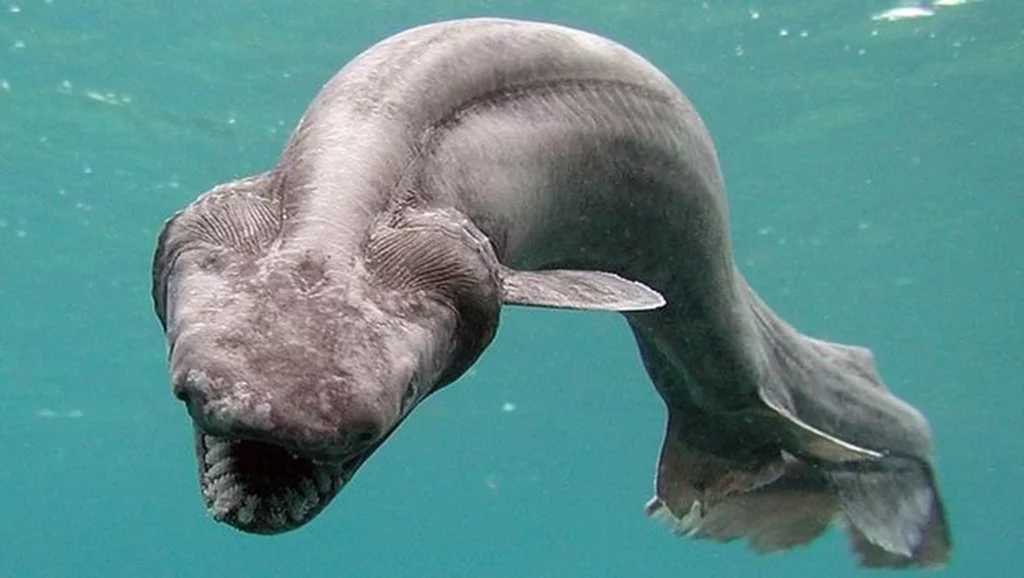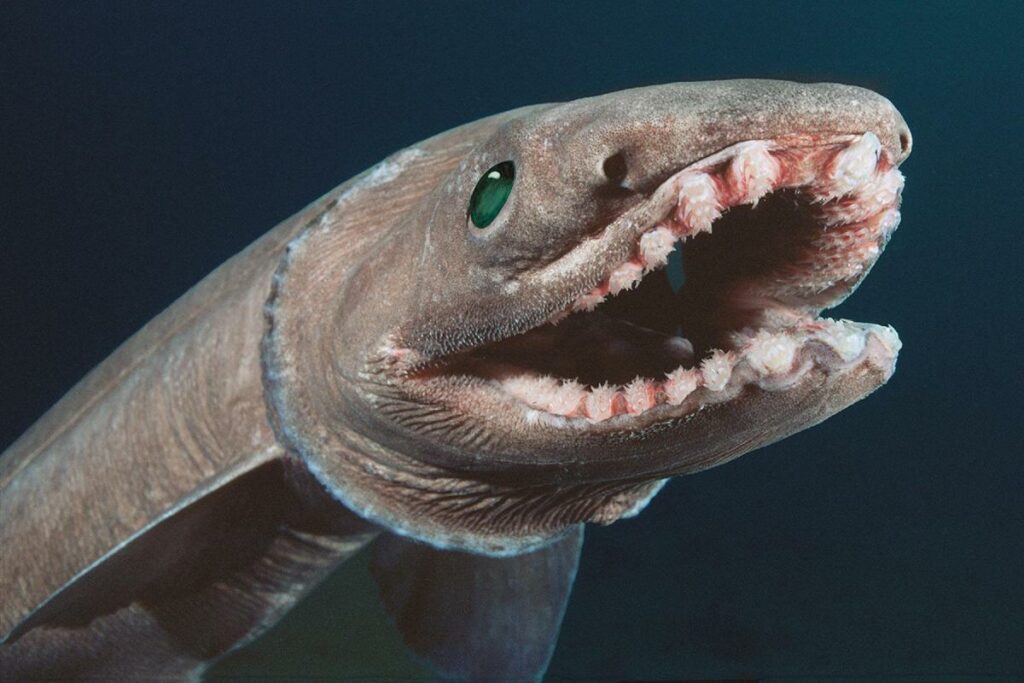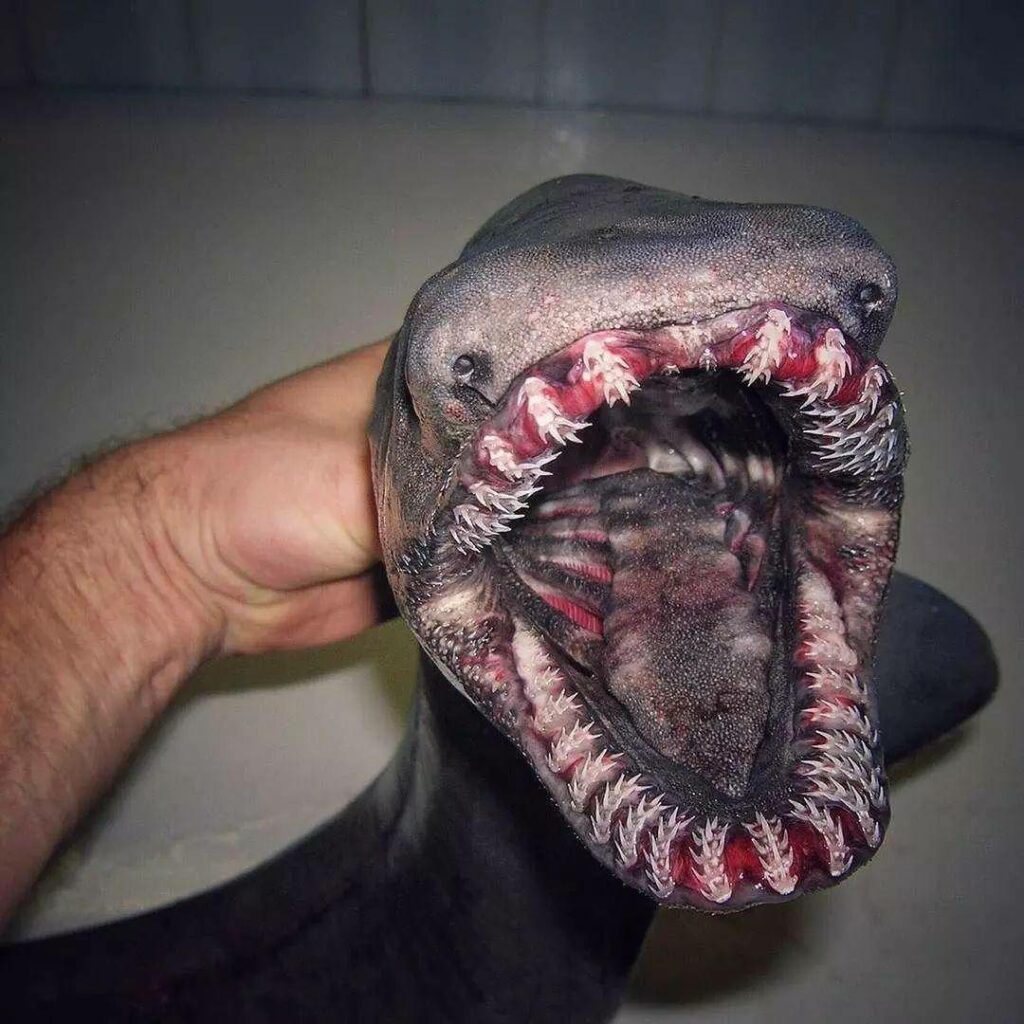The ocean is a vast, mysterious realm, home to a myriad of fascinating creatures that continue to captivate the human imagination. One such enigmatic inhabitant of the deep sea is the frilled shark (Chlamydoselachus anguineus). Often referred to as a “living fossil,” this primitive species offers a glimpse into the ancient underwater world and serves as a testament to the resilience of life in Earth’s most extreme environments.
Anatomy and Appearance
The frilled shark’s appearance is both mesmerizing and intimidating. Resembling a creature straight out of prehistoric times, its eel-like body is elongated and features a unique set of fringed gill slits that give the species its name. The frilly appearance is not just for show; it serves a functional purpose in enhancing the shark’s ability to extract oxygen from the water.
With a length that can reach up to 6.6 feet (2 meters), the frilled shark is not a giant among sharks, but its elongated body and primitive features set it apart from its more modern relatives. Its slender, snake-like appearance has earned it the nickname “sea serpent,” and its coloration, a blend of dark brown and gray, provides effective camouflage in the deep-sea environment where it resides.

Habitat and Distribution
Frilled sharks are denizens of the deep, inhabiting depths ranging from 390 to 4,200 feet (120 to 1,280 meters). These elusive creatures are found in various oceanic regions, including the Atlantic and Pacific Oceans, making it challenging for researchers to study them in their natural habitat. Their preference for deep-sea environments has resulted in limited opportunities for observation, contributing to the aura of mystery surrounding these ancient sharks.
Ancient Lineage
The frilled shark’s lineage can be traced back approximately 80 million years, placing it among the oldest living species of sharks. Its evolutionary history predates many of the more familiar shark species we encounter today. The retention of primitive characteristics, such as the fringed gill slits and the lack of a caudal fin, has led scientists to classify it as a living fossil.
Studying the frilled shark provides scientists with valuable insights into the evolutionary processes that have shaped the ocean’s inhabitants over millions of years. The species’ ability to survive and adapt in an ever-changing environment highlights the resilience of ancient life forms.

Feeding Behavior
The frilled shark’s feeding habits are as peculiar as its appearance. As an ambush predator, it relies on a set of needle-like teeth arranged in multiple rows to capture its prey. These teeth, resembling miniature grappling hooks, are designed to firmly secure the slippery bodies of deep-sea fish and cephalopods.
Using its highly flexible jaw, the frilled shark can extend its mouth to a remarkable size, allowing it to swallow prey whole. This method of feeding is particularly efficient in the low-light conditions of the deep sea, where precise hunting strategies are essential for survival.
Reproduction and Lifecycle
The reproductive biology of the frilled shark is another aspect that sets it apart from more familiar shark species. Unlike most sharks, which reproduce through live birth or oviparity (laying eggs), frilled sharks are ovoviviparous. This means that the female retains the eggs within her body until they hatch, giving birth to fully-formed pups.
The gestation period of frilled sharks is remarkably long, lasting up to three and a half years. This extended period ensures that the pups have sufficient time to develop in the protective environment of the mother’s womb. The number of pups born in a single litter is relatively small, typically ranging from 2 to 15, which is a testament to the challenges of reproduction in the deep-sea environment.

Conservation Status and Threats
While the frilled shark’s ancient lineage and unique adaptations have allowed it to survive for millions of years, it faces threats in the modern era. The deep-sea ecosystems that these sharks inhabit are increasingly vulnerable to human activities such as deep-sea trawling and mining. The slow reproductive rate and limited distribution of the frilled shark make it particularly susceptible to overexploitation.
Efforts to conserve the frilled shark and its deep-sea habitat are hindered by the lack of comprehensive data on its population dynamics and ecological role. Conservation initiatives must focus on preserving not only the frilled shark but also the fragile ecosystems of the deep sea, which are home to a myriad of species yet to be discovered and understood.

The Importance of Deep-Sea Exploration
Studying the frilled shark underscores the importance of deep-sea exploration in unraveling the mysteries of Earth’s oceans. With only a small fraction of the deep sea explored, there is undoubtedly a wealth of undiscovered species and ecosystems waiting to be revealed. The frilled shark serves as a living testament to the vastness of the unknown beneath the ocean’s surface.
Deep-sea exploration provides invaluable opportunities to expand our understanding of biodiversity, evolution, and the intricate relationships between species in extreme environments. As technological advancements continue to improve our ability to explore the depths, researchers may uncover new insights into the adaptations that allow species like the frilled shark to thrive in one of the harshest environments on Earth.
Conclusion
The frilled shark, with its ancient lineage and mysterious adaptations, remains a captivating symbol of the deep sea’s secrets. As a living fossil, it offers a window into the past, allowing scientists and enthusiasts alike to marvel at the resilience and longevity of life on Earth. However, the challenges facing the frilled shark and its deep-sea habitat highlight the urgent need for conservation efforts to protect these fragile ecosystems and the unique species that call them home.
By continuing to explore the depths of our oceans, we may uncover not only the secrets of the frilled shark but also countless other species that contribute to the rich tapestry of life on our planet. As we strive to strike a balance between scientific curiosity and environmental conservation, the frilled shark stands as a reminder of the interconnectedness of all life forms and the importance of preserving the wonders of the deep for future generations.

